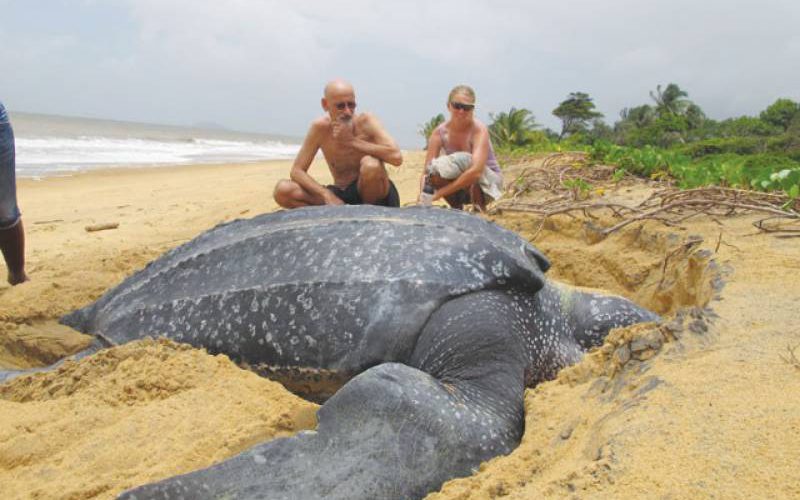Discovering the wonders of Badlands National Park, SD
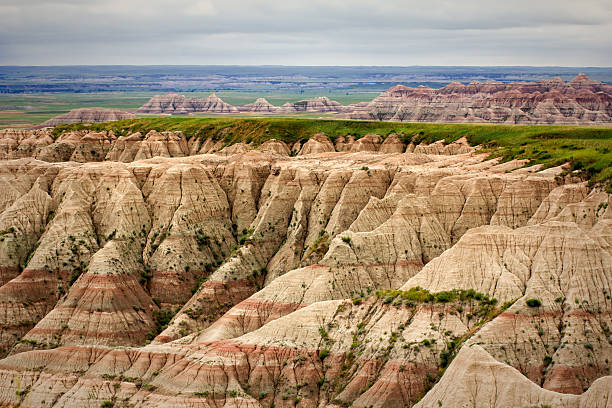
First proposed as Wonderland National Park back in 1922, the name Badlands pays homage to the Lakota people, who long called the area mako sica, literally ‘bad lands.’
The area’s rocky terrain, sometimes harsh weather and few water sources, which are normally muddy and unsafe to drink, would have made it a hard place to settle down. The Badlands presents many challenges to easy travel. When it rains in the Badlands, the wet clay becomes slick and sticky, making it very difficult to cross.
But the deeper you get acquainted with this amazing region and its unique history, the more you are convinced that these places can rightly be called a wonderland.
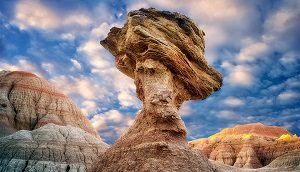
Spanning 244,000 acres, Badlands’ striking buttes, canyons and prairies are home to many resilient creatures, including some of the most endangered species in North America.
South Dakota is a wildlife-lover’s paradise.

Badlands National Park is a fantastic place to see North America’s wildlife.
It is home to bison, bighorn sheep, pronghorn, mule deer, whitetail deer, elk, coyote, swift fox, black-footed ferrets, mountain goats, and many other amazing animals. If you’re lucky, you may even see a mountain lion or golden eagles!
The American Bison are the most commonly seen large mammal in Badlands National Park.
The American Bison was named the national mammal of the United States on May 9, 2016. This majestic animal joins the ranks of the Bald Eagle as the official symbol of the country—and much like the Eagle, they are considered a symbol of American identity and one of the greatest conservation success stories of all time.
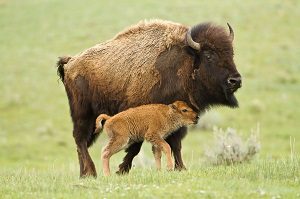
The bison population in the park is managed through a conservation grazing program. This program helps to maintain the grassland ecosystem and prevent the growth of unwanted plants. Bison can weigh up to 2,000 pounds. They can run up to speeds of 35 miles per hour.
Bighorn Sheep

Traveling in groups, bighorn sheep are built for spending long winters at high elevation. Born with rough split hooves, they climb up steep, rocky terrain to escape predators. Males, also known as “rams,” have larger horns that can weigh up to 30 pounds. Females, referred to as “ewes,” have horns that never form more than half a curl. Bighorn sheep eat grasses and shrubs.
Pronghorn
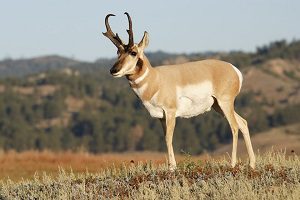
Pronghorn, often mistakenly called antelope, are the second fastest land mammal, running up to 60 miles per hour. They are only three feet tall at their shoulders and are reddish brown with white stomachs and wide, white stripes on their throats. Females and males have forward facing horns that curve slightly backward at their tips.
Mountain Lion
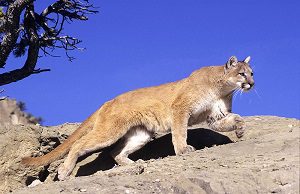
The cougar, also known as the mountain lion, puma, mountain cat, catamount, mountain screamer, painter or panther, is the second largest cat in the Americas following the jaguar. It actually holds the Guinness record for the most amount of names. It has over 40 in English alone! This is probably due to its wide distribution. It has the widest range of all American land animals ranging from the northern Yukon in Canada to south in the Andes.
Mountain lions are notoriously elusive creatures, and although they have been studied in South Dakota over the last ten years, researchers say there’s still more to learn.
Mountain lions try to avoid open areas and open meadows. They have travel corridors that follow timber lines, tree lines, and steep slope. Terrain ruggedness is a pretty important characteristic to mountain lion habitat so wherever the terrain is steep and rugged is a good place to find lions.
Golden Eagle
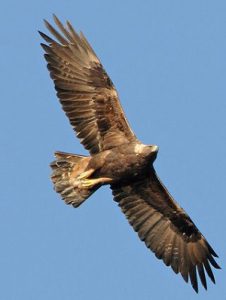
The Golden Eagle is one of the largest, fastest, nimblest raptors in North America. Lustrous gold feathers gleam on the back of its head and neck; a powerful beak and talons advertise its hunting prowess.
You’re most likely to see this eagle in western North America, soaring on steady wings or diving in pursuit of its prey. Golden eagles maintain home ranges or territories that may be as large as 200 km2. They build large nests in cliffs and other high places to which they may return for several breeding years.
For centuries, this species has been one of the most highly regarded birds used in falconry. Because of its hunting prowess, the golden eagle is regarded with great mystic reverence in some ancient, tribal cultures.
Agates, chalcedony, jasper
The Badlands region is famous for the abundance of valuable ornamental and semi-precious stones that are widely used in jewelry.
Agates.
The South Dakota state gemstone is the Fairburn Agate, and agates are plentiful for rockhounds to discover in the Badlands.

Agates are formed when volcanic rocks develop cavities, similar to Swiss cheese, then slowly filled with the siliceous matter deposited in multiple layers on the walls. Agate stones can be discovered in gray, white, pink, black, red, and yellow layers, depending on the groundwater seeped into the cavity layers.
The most prized, Fairburn Agate, will have unique parallel banding of colors from orange to red.
Chalcedony
Chalcedony is a mineral similar to quartz: brittle, hard, blue-tinged, and has a waxy appearance.

Various places in the Badlands will have “spikes” of chalcedony above the ground as they have resisted wind and rain erosion that eroded the surrounding environment. Rockhounds discover striking blue chalcedony east of Scenic S.D. in and around the Badlands.
Jasper
An opaque form of Chalcedony, Jasper may have a variety of impurities to give it a red, brown, yellow, or green color and a rare blue.

The distinctive red jasper color is due to iron inclusions, and due to all the impurities, jasper is often referred to as a rock and not a stone.
The best rockhounding for rich jasper stones is along the White River, a tributary of the Missouri River.
The prehistory of this area and its prehistoric inhabitants simply stagger any imagination!
The rock formations themselves are millions of years old, and Native history on the land goes back to time immemorial.
The history of the White River Badlands as a significant paleontological resource goes back to the traditional Native American knowledge of the area.

The Lakota found large fossilized bones, fossilized seashells and turtle shells.
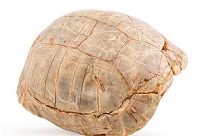
They correctly assumed that the area had once been under water, and that the bones belonged to creatures which no longer existed.
Paleontological interest in this area began in the 1840s. Fossils were occasionally collected, and in 1843 a fossilized jaw fragment collected by Alexander Culbertson of the American Fur Company found its way to a physician in St. Louis by the name of Hiram A. Prout.
In 1846, Prout published a paper about the jaw in the American Journal of Science in which he stated that it had come from a creature he called a Paleotherium. Shortly after the publication, the White River Badlands became popular fossil hunting grounds and, within a couple of decades, numerous new fossil species had been discovered in the White River Badlands.
Throughout the late 19th century and continuing today, scientists and institutions from all over the world have benefited from the fossil resources of the White River Badlands.
The White River Badlands have developed an international reputation as a fossil-rich area. It contains the richest deposits of Oligocene mammals known, providing a glimpse of life in the area 35 million years ago.
Some of fossil animals found there:
Archaeotherium (Entelodont),
Dinictis (Nimravid),

Eporeodon (Oreodont), Eusmilus (Nimravid), Hyaenodon (Creodont), Hyracodon (Running Rhino), Ischyromys (Ground Squirrel-like Rodent), Leptomeryx (Tragulid), Merycoidodon (Oreodont),
Mesohippus (Horse)
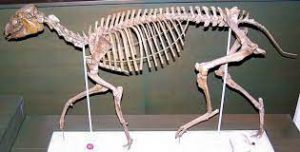
Metamynodon (Aquatic Rhino), Miniochoerus (Oreodont),
Poebrotherium (Camel).

This list can be continued.
From 1899 to today, the South Dakota School of Mines has sent people almost every year and remains one of the most active research institutions working in the White River Badlands.
Many of the archaeology sites are found on the margins of eroding sod tables, fragments of ancient prairie found throughout the park. Due to how easily the Badlands wear away, exposed archaeological sites must be surveyed and described quickly, before they are broken apart and washed away.
If you come across any material in the park that you think may be archaeological, please let a park ranger know!
By Alex Arlander | ENC News

























